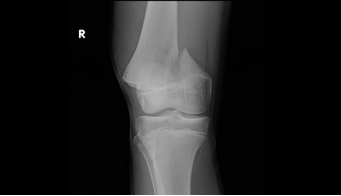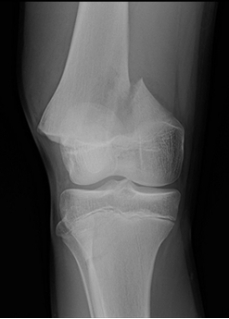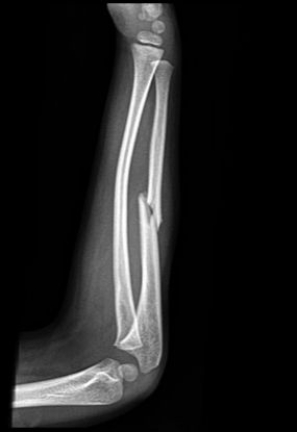Deck 3: Radiologic Evaluation of Fracture
سؤال
سؤال
سؤال
سؤال
سؤال
سؤال
سؤال
سؤال
سؤال
سؤال

فتح الحزمة
قم بالتسجيل لفتح البطاقات في هذه المجموعة!
Unlock Deck
Unlock Deck
1/10
العب
ملء الشاشة (f)
Deck 3: Radiologic Evaluation of Fracture
1
A trauma survey of radiographs assesses life-threatening injuries in priority order. Usually the first radiographic examination performed is the:
A) Lateral thoracolumbar
B) Anteroposterior abdominal
C) Cross-table lateral of the cervical spine
D) Anteroposterior skull
A) Lateral thoracolumbar
B) Anteroposterior abdominal
C) Cross-table lateral of the cervical spine
D) Anteroposterior skull
Cross-table lateral of the cervical spine
2

-Refer to the figure. Radiographic assessment of a fractured bone must include:
A) Two views at right angles to each other
B) The routine radiographic exam for the most proximal joint
C) An AP view of the contralateral limb to assess normal values
D) The routine radiographic exam for the most distal joint
Two views at right angles to each other
3
Eponyms are standardized, and the definitive glossary is included in the text for correct use of eponyms in documentation.
False
4

-Refer to the figure. Name the bone and characteristic of the fractures:
A) Midshaft of the ulna, incomplete, displaced
B) Midshaft of the radius, incomplete, displaced
C) Midshaft of the ulna, complete, displaced
D) Midshaft of the radius, complete, displaced

فتح الحزمة
افتح القفل للوصول البطاقات البالغ عددها 10 في هذه المجموعة.
فتح الحزمة
k this deck
5

-Refer to the figure. The _______is fractured in the most common epiphyseal injury pattern, a Salter-Harris ________:
A) femur; type 1
B) femur; type 2
C) tibia; type 1
D) tibia; type 2

فتح الحزمة
افتح القفل للوصول البطاقات البالغ عددها 10 في هذه المجموعة.
فتح الحزمة
k this deck
6

-Guiding bone fragments toward normal anatomic position via manipulation or traction and followed by stabilization with an external device is known as:
A) Closed reduction
B) Open reduction

فتح الحزمة
افتح القفل للوصول البطاقات البالغ عددها 10 في هذه المجموعة.
فتح الحزمة
k this deck
7

-"Missed" fractures occur with some frequency because of:
A) Failure to order radiography
B) Failure to recognize fractures on radiographs
C) Subtle fractures that are difficult to see on radiographs
D) All of the above

فتح الحزمة
افتح القفل للوصول البطاقات البالغ عددها 10 في هذه المجموعة.
فتح الحزمة
k this deck
8

-A basic principle of fracture management if there is clinical suspicion of fracture but negative radiographs is to:
A) Instruct the patient to use the limb to pain tolerance
B) Immobilize the limb and repeat radiographs in 7 to 10 days
C) Immobilize the limb for the average 4- to 6-week healing phase
D) Initiate physical therapy for sprain management

فتح الحزمة
افتح القفل للوصول البطاقات البالغ عددها 10 في هذه المجموعة.
فتح الحزمة
k this deck
9

-When all the processes of healing have ceased at an ununited fracture site, the condition is called:
A) Nonunion
B) Malunion
C) Delayed union
D) Avascular necrosis

فتح الحزمة
افتح القفل للوصول البطاقات البالغ عددها 10 في هذه المجموعة.
فتح الحزمة
k this deck
10

-Refer to the figure. The deformity of the radius is known as:
A) Plastic bowing
B) Greenstick fracture
C) Torus fracture
D) Complete midshaft fracture

فتح الحزمة
افتح القفل للوصول البطاقات البالغ عددها 10 في هذه المجموعة.
فتح الحزمة
k this deck








